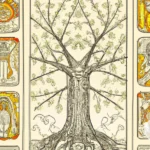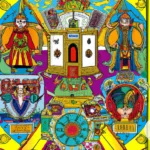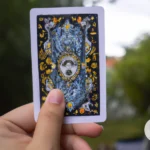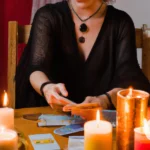Exploring the use of Kabbalah in Tarot readings can be both fascinating and overwhelming for those unfamiliar with this ancient Jewish mystical tradition. Kabbalah adds a deeper layer of meaning and insight to Tarot cards, offering a more profound understanding of the self and the universe. In this guide, we will break down the basics of Kabbalah, its relationship with Tarot, and provide a step-by-step approach to incorporating Kabbalah practices into your Tarot readings. Whether you’re a seasoned Tarot reader or a curious beginner, this guide will help you unlock the potential of Kabbalistic wisdom in your divination practice.
What is Kabbalah?
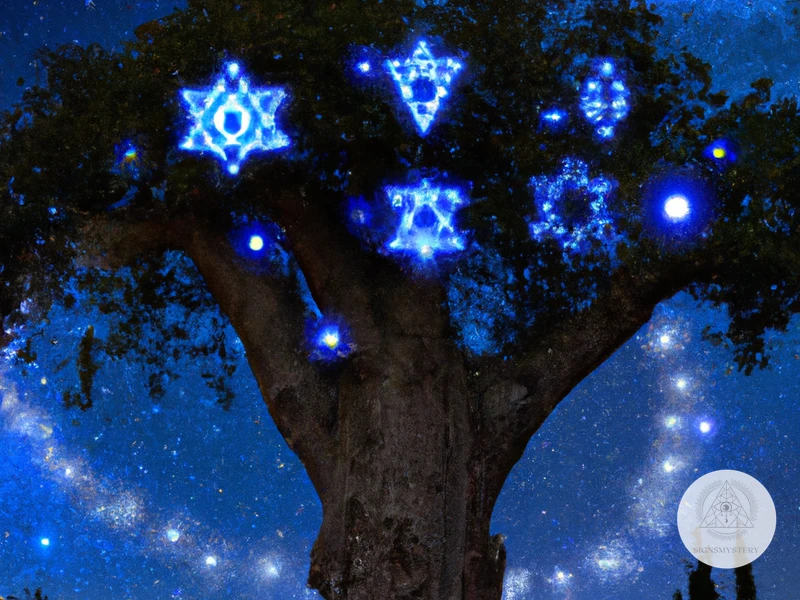
The study of Kabbalah is an ancient esoteric tradition that has been around for thousands of years. This mystical practice has a rich history that includes many different interpretations and philosophies. From the earliest days of Judaism, Kabbalah has been used as a way of understanding the nature of God and the universe. Kabbalah reveals the secrets of God’s divine presence in the world and provides a framework for exploring the hidden aspects of reality. In the context of tarot, Kabbalah offers a powerful tool for enriching your readings and deepening your understanding of the cards. By exploring the connections between the ten sephirot and the tarot, you can gain new insights into the meanings of the cards and the archetypes they represent. In this section of the article, we’ll explore the basics of Kabbalah, its mystical aspects, and its relationship to tarot. We’ll also take a look at some of the ways you can incorporate Kabbalistic principles into your tarot practice. If you’re looking to enhance your readings and deepen your understanding of the tarot, read on to learn more.
The Basics of Kabbalah
Kabbalah is an ancient Jewish mystical tradition that seeks to explore the nature of the universe and the human soul. The word Kabbalah itself means “to receive” and refers to the way in which this knowledge has been passed down through the generations. It is a complex system of thought that involves many different aspects, including numerology, astrology, and the interpretation of scripture.
Some basic principles of Kabbalah include:
- The concept of Ein Sof: This refers to the infinite and unknowable nature of God, which is beyond human comprehension.
- The Tree of Life: This is a central symbol in Kabbalah that represents the structure of the universe and the different levels of existence.
- The Ten Sephirot: These are ten divine attributes or emanations that flow from Ein Sof and make up the different aspects of creation.
- The Four Worlds: These are the four levels of creation, ranging from the most spiritual to the most physical.
- The importance of meditation: Kabbalah places a great emphasis on the use of meditation and visualization techniques to connect with the divine.
In terms of Tarot, Kabbalah can provide a rich and multi-layered framework for interpretation. By understanding the basic principles of Kabbalah, Tarot readers can deepen their understanding of the cards and the messages they convey. For example, knowledge of the Tree of Life and the Ten Sephirot can provide a powerful tool for interpreting the Major Arcana cards, each of which corresponds to a specific Sephirah.
To learn more about the specific Tarot correspondences of the Tree of Life and the Ten Sephirot, check out our article on “Tree of Life Tarot Correspondences”. You can also deepen your understanding of the Court Cards by exploring their Kabbalistic meanings in our article on “Kabbalistic Court Cards”. Understanding these correspondences can help you unlock the deeper meaning of the cards and provide more detailed and accurate readings for your clients.
The Mystical Aspects of Kabbalah
Kabbalah is a mystical system with many layers of interpretation. Its mystical aspects are profound and can add depth to your tarot readings. Mystical Kabbalah explores the nature of God (the Ein Sof) and the universe, seeking to understand the underlying spiritual principles that govern existence.
One of the key mystical aspects of Kabbalah is the concept of the Ein Sof, which is considered to be the infinite, unknowable essence of God. Kabbalists believe that the Ein Sof is beyond human comprehension and cannot be described or understood in any way. However, they also believe that everything in existence is a manifestation of the Ein Sof and that by studying the universe and its workings, we can gain insight into this divine essence.
Another important aspect of mystical Kabbalah is the Tree of Life, which is a diagram that represents the spiritual journey of the soul. The Tree of Life is composed of ten Sephiroth (singular: Sephirah), which are the divine attributes that emanate from the Ein Sof and manifest in the world. Each Sephirah represents a different aspect of God’s nature, and Kabbalists believe that by meditating on the Sephiroth, we can come into contact with these divine attributes and gain a deeper understanding of the universe.
Finally, mystical Kabbalah is also concerned with the idea of spiritual transformation. Kabbalists believe that by working on ourselves, we can achieve a state of spiritual enlightenment and come into closer contact with the divine. This idea is reflected in many tarot decks, which often include cards that symbolize spiritual transformation and growth.
Understanding the mystical aspects of Kabbalah can deepen your understanding of the tarot and enhance your readings. If you want to learn more about the connections between Kabbalah and the tarot, check out some of the resources available online, such as Understanding the Major Arcana in Kabbalah, The Ten Sephiroth and their Tarot Meaning, and Kabbalah, Tarot, and Presence.
Kabbalah and Tarot
The connection between Kabbalah and Tarot is a topic that has fascinated many occultists for years. Both systems are rich in symbolism and can provide deep insights into the workings of the universe and the human psyche. By incorporating Kabbalistic concepts into your Tarot readings, you can deepen your understanding of the cards and offer more profound insights to your clients.
Kabbalah and Tarot: A Comparison
Both Kabbalah and Tarot have their roots in Western mysticism, but they differ in their origins and development. Kabbalah is a Jewish mystical tradition that dates back to at least the 12th century, while Tarot originated in Europe during the late Middle Ages. However, both systems share many similarities, including:
| Kabbalah | Tarot |
|---|---|
| System of symbols and correspondences | System of symbols and correspondences |
| Focus on inner growth and spiritual development | Focus on inner growth and spiritual development |
| Utilization of archetypes | Utilization of archetypes |
The Benefits of Combining Kabbalah and Tarot
By combining Kabbalah and Tarot, you can deepen your understanding of both systems and enhance your ability to provide meaningful and insightful readings. Kabbalistic concepts can provide a framework for interpreting the cards and offer a deeper layer of meaning to your readings. This can help you to provide more nuanced and accurate interpretations and offer deeper insights to your clients.
Additionally, incorporating Kabbalistic imagery into your Tarot readings can help you connect with the archetypes and energies represented by the cards. This can provide a deeper level of insight into the reading and offer a more profound understanding of the message that is being conveyed.
In the next section, we will explore how to incorporate Kabbalah into your Tarot readings, including choosing a Kabbalistic Tarot deck and using Kabbalistic archetypes in your interpretations.
How to Incorporate Kabbalah into Your Tarot Readings
For those seeking to deepen their tarot practice, incorporating Kabbalah can add another layer of depth and meaning to your readings. Kabbalah is a mystical system that provides a framework for understanding the interconnection of all things in the universe. By using Kabbalistic imagery and archetypes, you can expand your understanding of the tarot and explore new ways of interpreting the cards. In this section of the article, we will explore practical ways to incorporate Kabbalah into your tarot readings.
Choosing a Kabbalistic Tarot Deck
When it comes to incorporating Kabbalah into your tarot readings, choosing the right deck is essential. Here are some tips to help you choose a Kabbalistic tarot deck that’s right for you:
- Research decks: Start by researching Kabbalistic tarot decks online or at your local metaphysical shop. Look for decks that incorporate Kabbalistic imagery and symbolism.
- Consider your level of experience: If you’re new to both tarot and Kabbalah, consider choosing a deck that’s beginner-friendly and includes helpful guidebooks and resources.
- Look for traditional symbolism: Traditional Kabbalistic symbolism includes the Tree of Life, Hebrew letters, and the ten Sephiroth. Look for decks that incorporate these elements for a more authentic Kabbalistic experience.
- Pay attention to artwork: Tarot decks come in all kinds of styles, so choose a deck with artwork that resonates with you. Look for decks with detailed, intricate artwork or with a color palette that reflects Kabbalistic colors.
- Consider the size of the deck: Consider the size and weight of the deck as well. Choose a deck that feels comfortable in your hands and easy for you to shuffle and handle.
By taking the time to choose the right Kabbalistic tarot deck, you can enhance your readings and deepen your connection to both Kabbalah and tarot.
Deepening Your Divination with Kabbalistic Imagery
One way to enhance your tarot readings using Kabbalah is to incorporate Kabbalistic imagery. By doing so, you can deepen your divination, and bring new layers of meaning and understanding to the cards.
What is Kabbalistic Imagery?
Kabbalistic imagery is a system of symbols and representations used to convey deeper spiritual concepts. Its origins can be traced back to the ancient mystical teachings of Judaism, and it has been used throughout history as a way to communicate complex spiritual ideas.
Incorporating Kabbalistic imagery into your tarot readings can help you tap into the spiritual energies of the cards and better understand their messages.
How to Incorporate Kabbalistic Imagery into Your Tarot Readings
There are many ways to bring Kabbalistic imagery into your tarot readings. Here are a few ideas to get you started:
| 1. Choose a Kabbalistic Tarot Deck | One of the easiest ways to incorporate Kabbalistic imagery into your tarot readings is to use a Kabbalistic tarot deck. These decks are designed to incorporate the Kabbalistic concepts of the Tree of Life and the Sephiroth into the cards themselves. |
| 2. Study Kabbalistic Symbols | To deepen your understanding of Kabbalistic imagery, take some time to study the symbols and representations associated with the Tree of Life and the Sephiroth. This will help you recognize these symbols when they appear in your tarot readings. |
| 3. Meditate on Kabbalistic Imagery | Meditating on Kabbalistic imagery, such as the Tree of Life or the symbols associated with the different Sephiroth, can help you connect with these energies on a deep level. This can enhance your ability to spot these symbols in your tarot readings and interpret their meanings. |
By incorporating Kabbalistic imagery into your tarot readings, you can deepen your understanding of the spiritual messages contained within the cards. This can help you provide more insightful and accurate readings, and help you to connect with the deeper spiritual energies of the universe.
Connecting with Kabbalistic Archetypes
One way to deepen your understanding and connection with Kabbalah when it comes to tarot is through connecting with Kabbalistic archetypes. Archetypes are recurring symbols, patterns, or characters in the collective unconscious that can provide insight into our psyche and behavior. In Kabbalah, there are ten archetypes or sephiroth on the Tree of Life. By understanding and connecting with these archetypes, you can gain a deeper understanding of yourself and the world around you.
Here are some ways to connect with Kabbalistic archetypes:
- Research: Learn about the ten sephiroth and their corresponding symbols, colors, planets, and Hebrew letters. Look for patterns and connections between them.
- Meditation: Use guided meditations or visualization techniques to connect with each archetype. Focus on the symbol or color associated with each sephirah and try to embody its qualities.
- Introspection: Reflect on how each archetype shows up in your life. Are there any sephiroth you feel particularly drawn to or struggle with? How can you integrate their qualities into your life?
- Tarot Spreads: Use tarot spreads that correspond with each sephirah to deepen your understanding and connection with its qualities.
By connecting with Kabbalistic archetypes, you can gain a greater understanding of yourself and the world around you. This understanding can lead to deeper insights in your tarot readings and a more meaningful connection with the cards.
Using the Sephiroth for Tarot Interpretation

The Kabbalistic philosophy offers a rich and complex framework for understanding the world and our place in it. One of the central pillars of Kabbalah is the Tree of Life, which is comprised of ten interconnected spheres or Sephiroth. Each Sephirah represents a distinct aspect of reality and consciousness, offering a unique lens through which we can understand the world around us. Tarot readings can be enriched by incorporating Kabbalistic concepts into interpretation, and a thorough understanding of the Sephiroth is a powerful tool in this process. In this section, we will explore the basics of the Sephiroth and how they can be used to interpret Tarot cards, as well as some useful Tarot spreads that incorporate the Sephiroth.
Understanding the Sephiroth
To effectively incorporate Kabbalah into tarot readings, it is important to have a basic understanding of the Sephiroth, the ten attributes or emanations on the Tree of Life. Each Sephirah represents a different aspect of the divine, and when used in conjunction with tarot cards, they can offer a deeper level of insight and interpretation.
The Ten Sephiroth:
| Sephiroth | Name | Attributes | Associated Tarot Cards |
|---|---|---|---|
| 1 | Kether | Crown | The Fool, The World |
| 2 | Chokmah | Wisdom | The Magician |
| 3 | Binah | Understanding | The High Priestess |
| 4 | Chesed | Mercy | The Emperor |
| 5 | Geburah | Severity | The Tower |
| 6 | Tiphareth | Beauty | The Sun, The Lovers |
| 7 | Netzach | Victory | The Chariot |
| 8 | Hod | Glory | The Hermit |
| 9 | Yesod | Foundation | The Moon |
| 10 | Malkuth | Kingship | The Empress, The World |
Each Sephirah is connected to one another and when using them in tarot readings, it is important to understand the relationships between them. For example, the Sephirah of Chokmah, representing wisdom, is connected to the Sephirah of Binah, representing understanding. Together, they can symbolize the power of knowledge and intellect.
When interpreting tarot cards using the Sephiroth, it is also important to take note of which tarot cards are associated with each Sephiroth. For example, The Hermit card is associated with the Sephirah of Hod, representing glory. This can indicate a need to recognize one’s inner greatness, or to seek guidance from a wise teacher or mentor.
Understanding the Sephiroth and their connections to tarot can offer deeper insight and meaning in tarot readings.
Using the Sephiroth to Interpret Tarot Cards
As mentioned earlier, the Sephiroth are the ten spheres on the Tree of Life in Kabbalah. Each Sephirah represents a different aspect of the divine and the human experience. By connecting the Sephiroth to the Tarot cards, we can gain a deeper understanding of the cards’ meanings and how they relate to our lives.
To start using the Sephiroth to interpret Tarot cards, it is helpful to have a basic understanding of the correspondences between the Sephiroth and the Tarot.
Table: Correspondence between Sephiroth and Major Arcana Tarot Cards
| Sephirah | Tarot Card | Interpretation |
|———-|————|—————-|
| Kether | The Fool | New beginnings, potential |
| Chokmah | The Magician | Manifestation, willpower |
| Binah | The High Priestess | Intuition, hidden knowledge |
| Chesed | The Empress | Nurturing, abundance |
| Geburah | The Emperor | Structure, discipline |
| Tiphareth | The Hierophant | Spirituality, tradition |
| Netzach | The Lovers | Harmony, beauty |
| Hod | The Chariot | Self-control, direction |
| Yesod | The Hermit | Reflection, inner guidance |
| Malkuth | The World | Manifestation, physical reality |
By understanding these correspondences, we can use the Sephiroth to inform our interpretation of Tarot cards. For example, if the card drawn is The Empress, which corresponds to Chesed, we may focus on nurturing and abundance in our interpretation.
It is important to note that this is just one method of interpretation and should not be relied upon too heavily. Tarot readings are deeply personal and the cards may have different meanings for each individual. It is important to also trust your intuition and allow the cards to speak to you in their own unique way.
Tarot Spreads with the Sephiroth
Tarot spreads are an excellent way to gain insight into specific areas of your life or answer specific questions. Incorporating the Sephiroth into these spreads can deepen the connection between Tarot and Kabbalah. Here are some spreads that use the Sephiroth:
Sephiroth Spread: This spread uses all ten Sephiroth in a linear layout. Begin with the first Sephirah, Kether, and work your way down to Malkuth. Each card in the spread represents an aspect of your journey through the tree. This spread is useful for gaining a broader understanding of yourself and your journey.
Four Worlds Spread: This spread is based on the four worlds of Kabbalah: Atziluth, Briah, Yetzirah, and Assiah. Each world represents a different level of reality, from the most abstract (Atziluth) to the most concrete (Assiah). The spread consists of four cards, one for each world, and can provide insight into specific areas of your life.
Archetype Spread: This spread uses the ten Sephiroth as archetypes. Each card in the spread represents a different archetype, such as the Creator, the Destroyer, or the Mother. The spread can help you understand how these archetypes are manifesting in your life.
Crown Spread: This spread focuses on the top three Sephiroth: Kether, Chokmah, and Binah. These three Sephiroth are known as the Supernal Triad and represent
Subscribe to Our Newsletter
Sign up to receive the latest news and updates.
Pathworking Spread: This spread uses the paths between the Sephiroth as a guide. Each card in the spread represents a different aspect of the journey along the path. This spread is useful for gaining insight into a specific area of your life and the obstacles that may be blocking your path.
Incorporating the Sephiroth into your Tarot readings can deepen your understanding of the cards and provide insight into your journey through life. Whether you use one of these spreads or create your own, take the time to connect with the Sephiroth and see how they can enhance your Tarot practice.
Kabbalistic Meditation for Enhanced Tarot Readings
Exploring the mystical realm of Kabbalah can greatly enhance your Tarot readings. One powerful method of incorporating Kabbalah into your practice is through meditation. By engaging in Kabbalistic meditation, you can deepen your connection to the divine, tap into archetypal energies, and gain greater insight into the cards. Through a series of visualization techniques and focused attention on the Tree of Life, you can elevate your Tarot readings to a higher level of spiritual awareness. Let’s delve into the world of Kabbalistic meditation and discover how it can transform your Tarot practice.
Meditating on the Tree of Life
Meditating on the Tree of Life is a powerful technique in Kabbalah that can be used to enhance your Tarot readings. The Tree of Life is a symbolic representation of the various aspects of the divine consciousness and the universe, according to Kabbalistic teachings. By meditating on the Tree of Life, you can gain a deeper understanding of these aspects and how they relate to your Tarot readings.
1. Create a Sacred Space – Before beginning your meditation, it is important to create a sacred space. This can be a physical space or a mental space. Choose a quiet, peaceful place where you will not be disturbed. You can light candles, burn incense or sage, or play soft music to help create a calm and serene environment.
2. Get Into a Meditative State – To meditate on the Tree of Life, you must first enter a meditative state. You can do this by focusing on your breath or by using a guided meditation. Once you are in a meditative state, you can begin to visualize the Tree of Life.
3. Visualize the Tree of Life – The Tree of Life is composed of ten interconnected spheres, known as Sephiroth, each representing different aspects of the divine consciousness. Visualize the Tree of Life before you, with the top sphere (Keter) at the top of your head, and the bottom sphere (Malkuth) at your feet.
4. Focus on Each Sephirah – Starting with Keter, move your focus down the Tree of Life, visualizing each Sephirah in turn. Spend time with each Sephirah, contemplating its meaning and significance. You can also use this time to connect with any corresponding Tarot cards that the Sephirah may represent.
5. Reflect and Interpret – As you move through the Sephiroth, reflect on your Tarot reading, considering how each Sephirah relates to the cards you have pulled. Use this time to interpret your reading in a deeper, more meaningful way.
Meditating on the Tree of Life is just one way to incorporate Kabbalah into your Tarot readings. With practice, this technique can help you gain a deeper understanding of the divine consciousness and enhance your ability to interpret Tarot cards.
Using the Kabbalistic Names of God in Meditation
Kabbalah provides a vast array of spiritual practices that can enhance our understanding of the Tarot. One way to deepen our connection to the divine and unlock the hidden symbolism of the cards is through meditation. In particular, using the Kabbalistic Names of God in meditation can help us tap into the archetypal energies represented by the Tarot and gain new insights into our readings.
To begin, it’s important to understand the significance of these Names. In the Kabbalistic tradition, God is seen as having many Names, each representing a different aspect of the divine essence. These Names are considered to be powerful tools for spiritual transformation and are often used in prayer and meditation.
Table: The Kabbalistic Names of God
| Name | Meaning |
|---|---|
| Ehyeh Asher Ehyeh | I Am That I Am |
| Yahweh | The Eternal One |
| El Shaddai | The Almighty |
| Adonai | Lord and Master |
| Elohim | God as Creator |
| Tzevaot | Lord of Hosts |
When incorporating the Names of God into your Tarot meditation practice, begin by choosing a card that resonates with the aspect of God you wish to connect with. For example, if you wish to gain a deeper understanding of your creative potential, you might choose the Ace of Wands and meditate on the Name Elohim.
Once you have chosen your card and Name, find a quiet place where you can sit comfortably and focus on your breath. Close your eyes and visualize the card in your mind’s eye. Allow the imagery to come alive, and imagine yourself entering into the scene.
As you continue to focus on the card, begin to repeat the Name of God silently to yourself. Allow the sound of the Name to fill your awareness, permeating every cell of your being. Feel the energy of the Name flowing through you, awakening and empowering the corresponding aspect of your self.
As you continue your meditation, pay attention to any insights or intuitive flashes you receive. The Kabbalistic Names of God can act as gateways to higher states of consciousness, and can lead to profound spiritual experiences and understanding.
Incorporating the Kabbalistic Names of God into your Tarot meditation practice is just one way to deepen your readings and gain a deeper understanding of the metaphysical underpinnings of the cards. With practice and dedication, this technique can help you unlock the secrets of the Tarot and connect with the divine essence within.
Kabbalistic Visualization Techniques for Tarot Readings
One powerful way to incorporate Kabbalah into your tarot readings is through visualization techniques. These techniques involve using your imagination and mental imagery to deepen your understanding and connection to the cards. Here are some Kabbalistic visualization techniques that you can use in your tarot readings:
| Visualization Technique | Description |
|---|---|
| Tree of Life Visualization: | Close your eyes and visualize the Tree of Life in your mind’s eye. Imagine each sphere representing the different aspects of your life and the different energies at play in your reading. You can even imagine placing each tarot card you draw onto its corresponding sphere on the Tree of Life. |
| Name of God Visualization: | Choose a Kabbalistic name of God that represents the energy you want to focus on in your reading. Close your eyes and visualize the name in Hebrew letters in front of you. See the letters glowing with light and imagine the energy of the name infusing your reading with its power. |
| Archetype Visualization: | Before you begin your reading, choose a Kabbalistic archetype that represents the energy or theme you want to focus on. Close your eyes and visualize the archetype in detail. Imagine them standing in front of you or sitting across from you at the table, and see how they interact with the cards you draw. |
Using these visualization techniques can enhance your tarot readings by providing a deeper understanding of the energies at work in your life and in your reading. They can also help you connect with the mystical aspects of Kabbalah and open yourself up to new insights and revelations. Try experimenting with different visualization techniques to see which ones work best for you and your readings.
The Benefits of Using Kabbalah in Your Tarot Readings
Incorporating Kabbalah in your Tarot readings can provide numerous benefits. Firstly, Kabbalah offers a deeper understanding of the mystical and symbolic aspects of the Tarot. This understanding can help you in interpreting the cards more accurately and gain a better insight into your readings. Through Kabbalistic symbolism, you can access hidden meanings in the Tarot cards, making your reading more profound.
Secondly, practicing Kabbalistic meditation techniques can help you in developing a deeper connection with the divine, resulting in more insightful and intuitive Tarot readings. The Tree of Life is a powerful symbol in Kabbalah that represents the path to divine enlightenment. By meditating on this symbol, you can access spiritual guidance, which can help you in interpreting the cards and deliver more accurate readings.
Kabbalah offers a more profound insight into the universal laws and principles governing the world, which can help you in interpreting the Tarot cards, and gain a deeper understanding of the underlying energies affecting the situation in question. In this way, Kabbalah offers a more comprehensive approach to Tarot reading.
Lastly, incorporating Kabbalah in your Tarot readings can lead to a more profound and spiritual experience. By connecting with the divine and accessing spiritual knowledge, you can gain a deeper insight into your life’s purpose, which can contribute to your personal growth and development.
Incorporating Kabbalah in your Tarot readings can lead to more insightful and accurate interpretations of the cards. Kabbalistic meditation can help you in developing a deeper connection with the divine, leading to more intuitive readings. Kabbalah offers a more comprehensive approach to Tarot reading, which can provide a more profound and spiritual experience, leading to personal growth and development.
Conclusion
In conclusion, incorporating Kabbalah into your tarot practice can deepen your understanding of the cards and enhance the accuracy of your readings. By choosing a Kabbalistic tarot deck and connecting with the archetypes and imagery present, you can tap into the mystical aspects of both Kabbalah and tarot. Furthermore, utilizing the Sephiroth for interpreting tarot cards adds another layer of depth and insight to your readings.
By incorporating Kabbalistic meditation techniques into your practice, you can take your readings to the next level. Meditating on the Tree of Life and visualizing the Kabbalistic Names of God can help you develop a deeper connection to the spiritual realm and access higher levels of consciousness when reading the cards.
Overall, using Kabbalah in your tarot practice can be incredibly rewarding and transformative. It allows you to tap into ancient wisdom and divine insight, creating a powerful spiritual tool for personal growth and understanding. So, give it a try and see how it can enhance your readings and deepen your connection to the mystical world of tarot.
Frequently Asked Questions
How is Kabbalah connected to Tarot?
Kabbalah and Tarot have many similarities in terms of symbolism and mystical interpretations. Both systems provide insights into the spiritual realm and offer a framework for personal growth and transformation.
Do I need to be familiar with Kabbalah to use it in my Tarot readings?
No, but a basic understanding of Kabbalistic concepts can enhance your ability to interpret Tarot cards and deepen your connection to the spiritual realm.
What is the Sephiroth?
The Sephiroth are ten spheres on the Kabbalistic Tree of Life that represent different aspects and qualities of the Divine.
How can I incorporate Kabbalistic imagery into my Tarot readings?
Choosing a Kabbalistic tarot deck and studying the symbolism of its images is a great way to incorporate Kabbalistic imagery into your Tarot readings.
What are the benefits of using Kabbalah in Tarot readings?
Using Kabbalistic concepts can enhance your ability to interpret Tarot cards, deepen your spiritual connection, and provide insights into your personal growth and transformation.
What is Kabbalistic meditation?
Kabbalistic meditation is a spiritual practice that involves focusing on the symbolism and concepts of Kabbalah to deepen your connection to the Divine.
Do I need to follow a specific tradition or religion to use Kabbalah in my Tarot readings?
No, Kabbalah is a non-dogmatic spiritual system that is compatible with many different belief systems and religious traditions.
Can Kabbalistic meditation help me gain insight into my Tarot readings?
Yes, by deepening your spiritual connection and opening yourself up to divine guidance, Kabbalistic meditation can enhance your ability to interpret Tarot cards and gain insight into your personal growth and transformation.
Is studying Kabbalah difficult?
Like any spiritual system, studying Kabbalah requires time and effort, but there are many resources available to help you deepen your understanding.
Can Kabbalah and Tarot be used together for divination?
Yes, Kabbalah and Tarot can be used together to provide insights into the spiritual realm and help guide personal growth and transformation.



